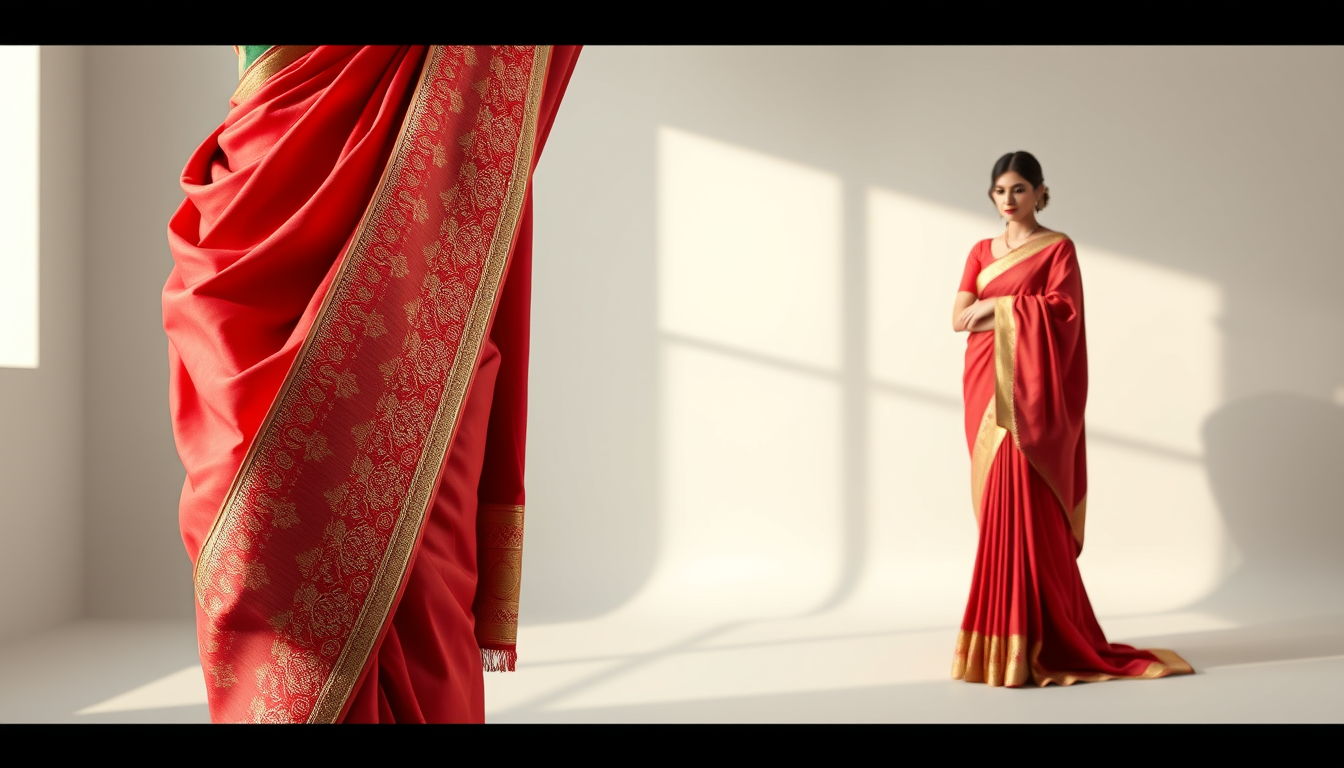Introduction
The Indian saree is a symbol of elegance, tradition, and cultural heritage. It is a garment that has captivated the hearts of women across the globe for centuries. This comprehensive guide delves into the rich history, diverse styles, and significance of the Indian saree, providing a detailed understanding of this iconic piece of clothing.
The History of the Indian Saree
Ancient Origins
The saree’s origins can be traced back to ancient India, with evidence suggesting that it was worn by women as early as the Indus Valley Civilization. The earliest depictions of sarees can be found in ancient Indian texts and sculptures, where they were often worn by queens, goddesses, and other prominent figures.
Evolution Over Centuries
Over the centuries, the saree has evolved significantly, reflecting the diverse cultural influences and regional traditions of India. The Mughal Empire, for instance, introduced intricate embroidery and rich fabrics like silk and brocade, while the British colonial period saw the saree adapt to Western styles, with lighter fabrics and simpler designs gaining popularity.
Modern Day
Today, the saree continues to be a staple in Indian fashion, with numerous variations and styles emerging to cater to contemporary tastes. From the traditional silk saree to the modern georgette saree, the saree remains a versatile and timeless garment.
The Significance of the Indian Saree
Cultural Symbolism
The saree holds immense cultural significance in India. It is often associated with festivals, weddings, and other important life events. The saree is also a symbol of Indian femininity and grace, reflecting the country’s rich cultural heritage and traditional values.
Social and Economic Impact
The saree industry plays a significant role in India’s economy, providing employment to millions of people across the country. It also serves as a medium for artistic expression, with skilled artisans creating intricate designs and patterns that showcase their craftsmanship.
Understanding the Different Styles of Indian Sarees
Traditional Sarees
Banarasi Saree
The Banarasi saree, originating from Varanasi, is known for its intricate zari work and rich brocade. These sarees are often worn during weddings and other formal occasions and are considered a symbol of luxury and elegance.
Kanjeevaram Saree
The Kanjeevaram saree, hailing from Tamil Nadu, is renowned for its vibrant colors and gold zari work. These sarees are typically worn during weddings and festivals and are considered a traditional bridal attire.
Patan Patola Saree
The Patan Patola saree, from Gujarat, is famous for its double ikat technique, which involves dyeing the fabric before weaving. These sarees are known for their intricate patterns and are often worn during special occasions.
Modern Sarees
Georgette Saree
The georgette saree, made from georgette fabric, is a modern take on the traditional saree. These sarees are lightweight, easy to wear, and come in a variety of colors and designs. They are often worn for everyday wear and are popular among younger generations.
Chiffon Saree
The chiffon saree, made from chiffon fabric, is another modern variation of the traditional saree. These sarees are known for their softness and flow, making them ideal for summer wear. They come in a range of colors and designs and are often worn for casual and formal occasions alike.
Organza Saree
The organza saree, made from organza fabric, is a luxurious and elegant option. These sarees are known for their shimmering and flowing quality, making them perfect for formal events and weddings.
The Art of Wearing a Saree
The Perfect Fit
Wearing a saree involves a certain level of skill and practice. The saree should be draped in a way that accentuates the wearer’s figure and is comfortable to wear. The pallu, or the loose end of the saree, should be draped over the left shoulder, while the rest of the saree should be pleated and tucked into the petticoat.
Accessories
Accessories play a crucial role in completing the saree look. Traditional saree accessories include bangles, earrings, necklaces, and bindis. Modern saree styles may also incorporate contemporary accessories like statement jewelry, scarves, and handbags.
Footwear
The choice of footwear can also enhance the saree look. Traditional footwear for sarees includes juttis, kolhapuris, and mojris. Modern saree styles may also incorporate heels, sandals, and flats, depending on the occasion and personal preference.
The Future of the Indian Saree
Sustainability
In recent years, there has been a growing emphasis on sustainability in the fashion industry. The saree industry is no exception, with many designers and artisans focusing on eco-friendly materials and ethical practices. This includes the use of organic fabrics, recycled materials, and fair labor practices.
Global Influence
The saree has also gained global recognition and influence, with international designers incorporating saree-inspired elements into their collections. This has helped to popularize the saree among a wider audience and has led to a resurgence in its popularity.
Innovation
The saree industry is also witnessing innovation in terms of design and technology. New fabrics, techniques, and styles are being introduced, making the saree more versatile and accessible. This includes the use of innovative materials like smart fabrics and 3D printing.
Conclusion
The Indian saree is more than just a garment; it is a symbol of Indian culture, tradition, and heritage. With its rich history, diverse styles, and significant cultural and economic impact, the saree continues to captivate and inspire. As the saree industry evolves, it is clear that this iconic garment will continue to play a vital role in Indian fashion and beyond.
References
– “The History of the Saree” by Dr. Sonal Sachdev Patel
– “The Art of the Saree” by Anuradha Sridhar
– “Saree: The Iconic Garment of India” by Neeta Lall
– “The Future of the Saree Industry” by Meera Sanyal
